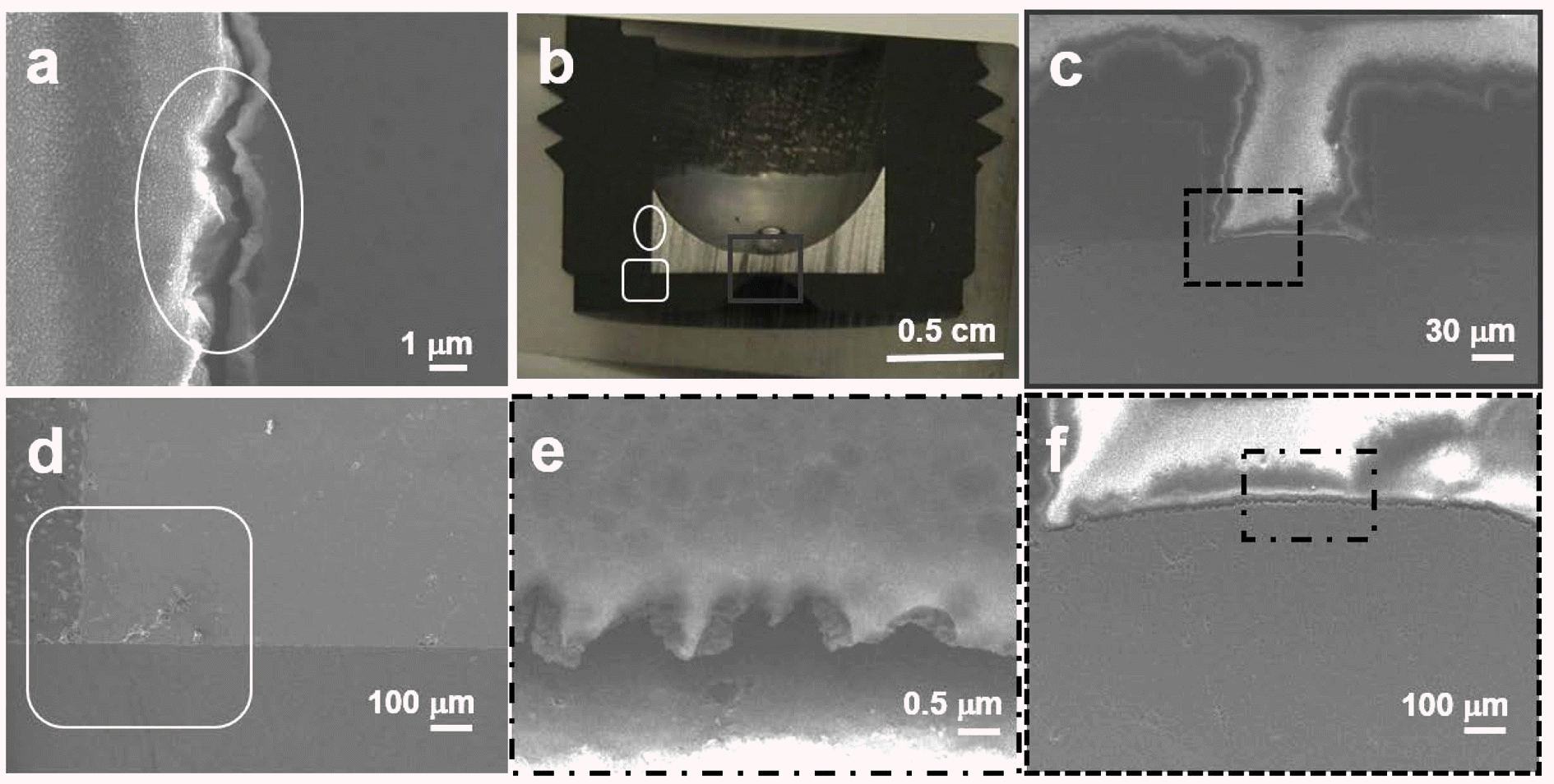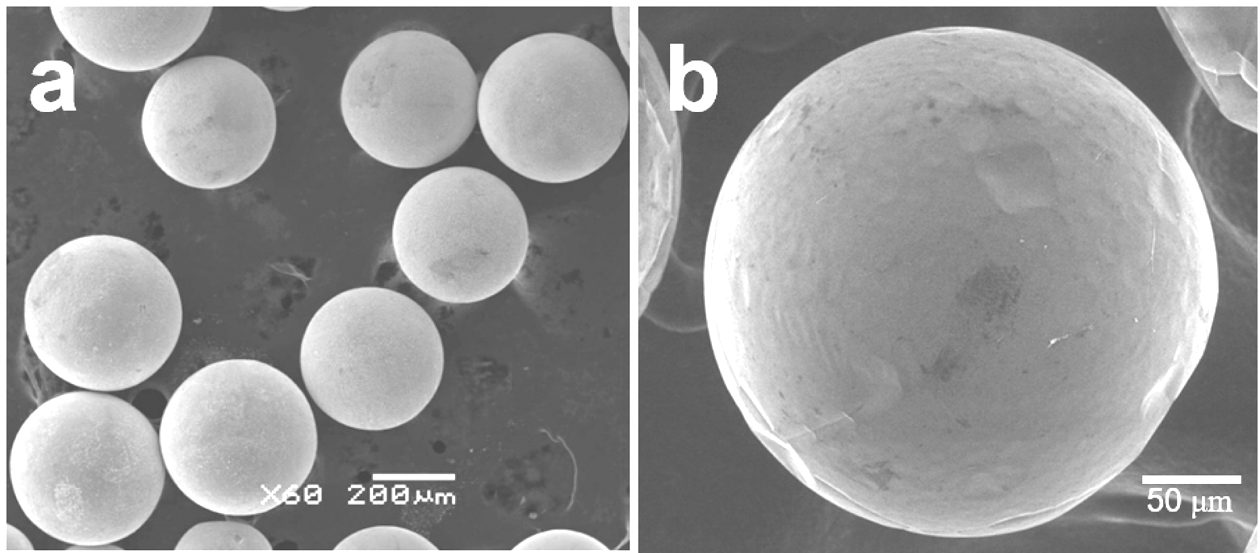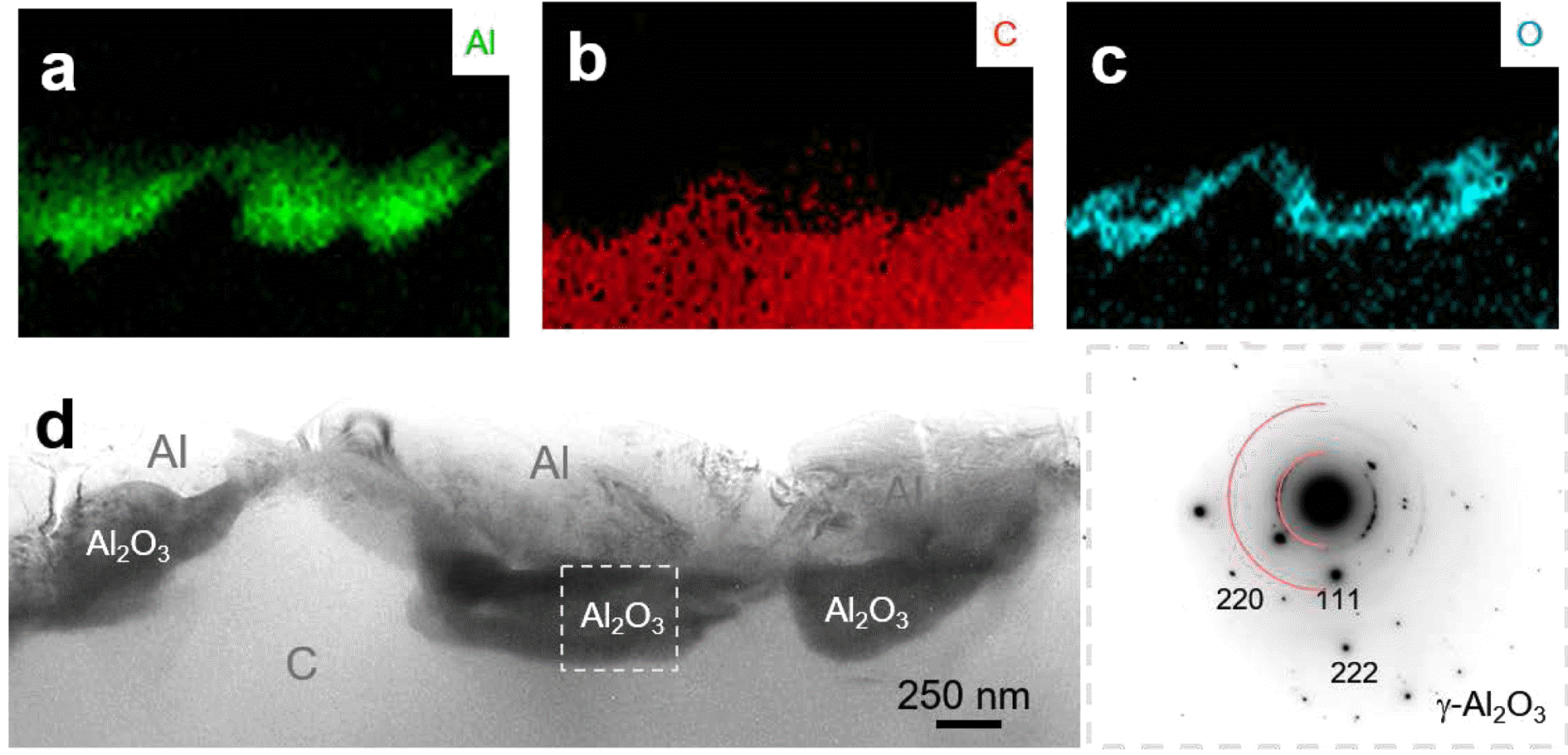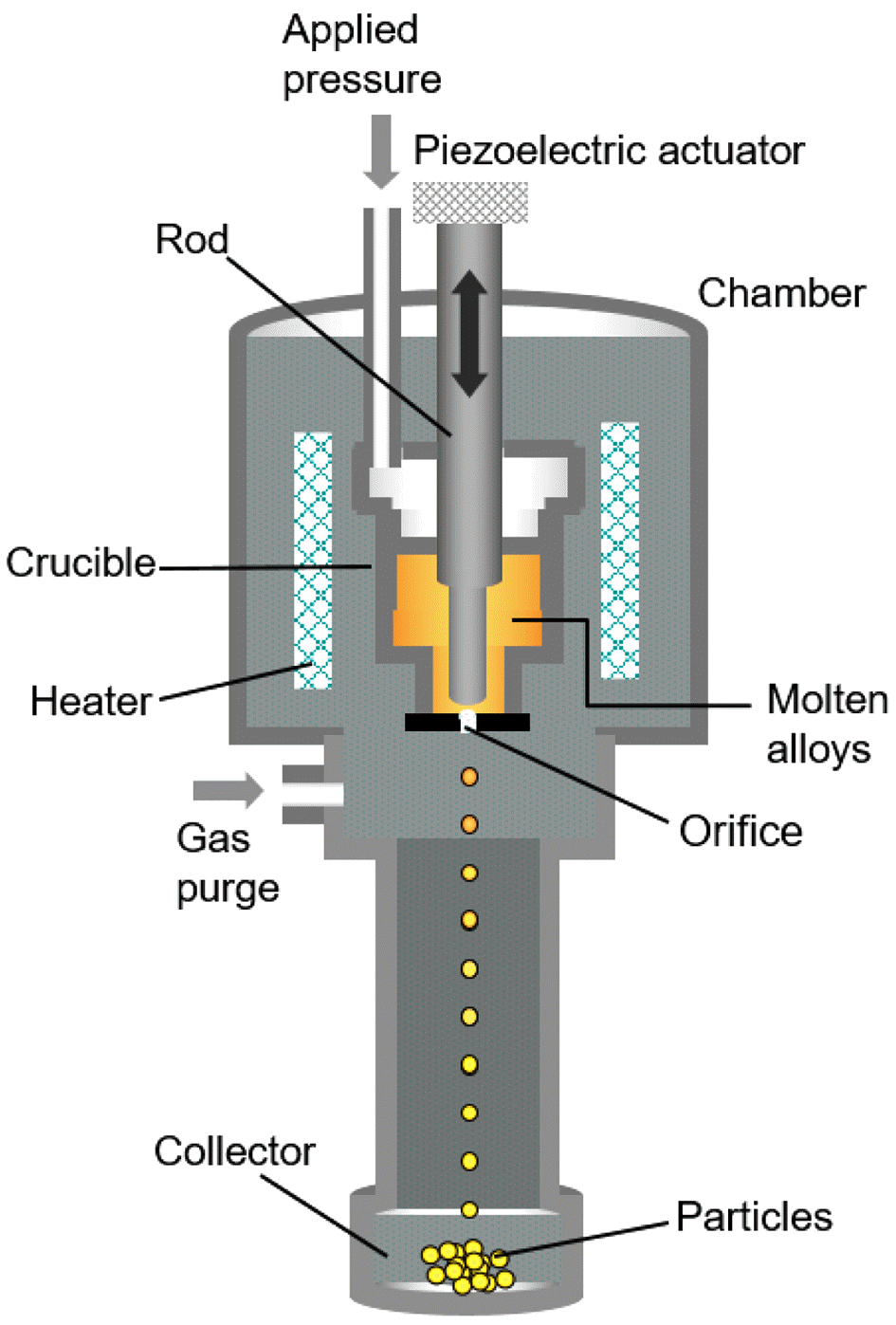Articles
- Page Path
- HOME > J Korean Powder Metall Inst > Volume 25(2); 2018 > Article
-
ARTICLE
- Chemical Reaction between Aluminium and graphite Crucible During the Fabrication of Spherical Monosized Al particles
- Hansang Kwona,b,*
-
Journal of Korean Powder Metallurgy Institute 2018;25(2):99-103.
DOI: https://doi.org/10.4150/KPMI.2017.25.2.99
Published online: March 31, 2018
a Department of materials system engineering, Pukyoung National University, 365 Sinseon-ro, Nam-gu, Busan 48547, Republic of Korea
b Next Generation Materials Co., Ltd, 1401 Centum science park, 79 Centum jungang-ro, Haeundae-gu, Busan 48058, Republic of Korea
- *Corresponding Author: Hansang Kwon, TEL: +82-51-629-6383, FAX: +82-51-629-6373, E-mail: kwon13@pknu.ac.kr
• Received: April 7, 2018 • Revised: April 10, 2018 • Accepted: April 13, 2018
© The Korean Powder Metallurgy Institute. All rights reserved.
- 991 Views
- 5 Download
Abstract
- Spherical monosized pure aluminum (Al) particles are successfully fabricated by the pulsated orifice ejection method (POEM). The surface reaction between Al and the graphite crucible is investigated by analysing the microstructure and chemical composition of the materials. No significant chemical reaction occurs between Al and the graphite owing to the crystalline Al oxide (γ-Al2O3) layer generated in the initial state. The γ-Al2O3 layer is clearly observed in all regions between the Al particles and graphite via transmission electron microscopy and confirmed by the selected area diffraction pattern. The morphology of the γ-Al2O3 layer perfectly follows the surface morphology of the graphite crucible, which showed nanoscale roughness. This implies that molten Al could not directly contact graphite even though the surface of the crucible became rough to some extent. However, this passivation phenomenon allowed the successful fabrication of monosized pure Al particles. Therefore, POEM is a useful process at least to manufacture monosized pure Al particles.
- Aluminium is a widely used engineering material because it has relatively good mechanical, electrical, thermal, and chemical properties [1,2]. Its density is almost three times lower than those of general iron and steel. Owing to its unique properties, Al is used as a structural material, electric cable, electro parts, heat sink and so on [3, 4]. Recently, industrial applications increasingly require high-performance materials, and therefore, high-performance Al materials should be developed to meet the current demands. Powder metallurgy is one of the good methods to produce Al. In general, Al from the powder metallurgical process could show better mechanical performance than that produced by the general casting process because the microstructure of the powder metallurgical product is finer. Moreover, the properties can be controlled through the particle size, shape, and morphology of the raw material. In particular, the properties of the particles are affected by the grain boundary formation of the material, and this microstructural characteristic critically affects the final properties of the product.
- The pulsated orifice ejection method (POEM) is a relatively new mass-producible method for manufacturing monosized powder particles [5]. POEM is essentially a melting process that is carried out using a graphite crucible, tundish in a chamber, and piezoelectric actuator. Target materials are loaded into the crucible and heated to a temperature greater than their melting points. The molten materials are pressurised by a piezoelectric actuator and simultaneously ejected through an orifice, as shown in Fig. 1. POEM is a powerful tool and monosized particles can be formed to achieve uniform microstructural properties. Moreover, powder particles fabricated by the POEM could be used as singular engineering components. However, it is necessary to understand the reaction between graphite and target materials for manufacturing high-quality monosized particles by POEM.
- In this study, pure Al was successfully fabricated via POEM, and the chemical reaction between Al and graphite was investigated using remnant Al, which covers the area near the graphite orifice after the POEM process. Energy-dispersive X-ray spectroscopy (EDS), scanning electron microscopy (SEM), and transmission electron microscopy (TEM) were utilised for characterizing the chemical composition and microstructure of the interface between the remnant Al and graphite.
Introduction
- Pure Al (AMC Co, Ltd, Korea) was used without any release agent as the raw material and processed using POEM at 700°C under vacuum with a 250-μm orifice to fabricate monosized pure Al particles. The POEM device consists mainly of a driving part that applies pressure to the sample melt by the vibration of the rod, a hightemperature, high-vacuum furnace, and a droplet-jetting orifice part (Fig. 1). The sample was melted in a crucible installed in the chamber, and the droplets jetted out by the vibration of the rod were cooled while they came down the drop pipe, and then collected The microstructure and elements between the pure Al particles and graphite was observed by high-resolution cold-field emission SEM and EDS (Hitachi, HRCFE-SEM-EDS S-4800). A high-resolution transmission electron microscope (HR-TEM, Hitachi, Japan) equipped with an energy-dispersive spectrometer was used to obtain selected-area diffraction (SAD) patterns.
Experimental
- As shown in the SEM image in Fig. 2, the as-synthesised monosized pure Al particles have spherical morphology with an aspect ratio of 1. The surface of some particles shows small sulci and polycrystalline morphology. However, pure Al was well-formed by the POEM process and the obtained powder particles are monosized and almost spherical.
- Figure 3 shows the digital image of the crucible tundish with pure Al remaining after re-solidification. The resolidified pure Al metal was found to be directly in contact with graphite by macro-level observation. Investigation of this interface in direct contact is a very critical issue to understand the interaction between the Al and carbon species. In general, pure Al easily reacts with carbon and generates Al carbide (Al4C3). Al4C3 is known to absorb water easily and resolved [6]. It is also known to be a brittle material and an undesirable precipitate that deteriorates the toughness and elongation of materials. However, nanosized Al4C3 offers chemical interface connection between the Al and carbon species and provides efficient load transfer [7]. However, if molten Al reacts with carbon, it forms Al4C3, which is adsorbed onto the particles produced by the POEM.
- Figure 4 shows the cross-sectional SEM images of the crucible tundish with remaining pure Al after re-solidification. It is inferred that the vertical interface between Al and graphite is not perfectly connected, based on the SEM observation (Fig. 4(a)). It is expected that this gap was formed due to the coefficient of thermal expansion of the materials. However, re-solidified Al is clearly observed in the orifice region (Fig. 4(c)) and the interface between Al and graphite is perfectly bound with relatively higher roughness (Fig. 4(e) and (f)). This direct interface bonding between Al and graphite could provide a strong driving force for the reaction.
- Figure 5 shows the TEM micrographs, including the EDS spectra and SAD pattern of the remaining re-solidified pure Al and graphite tundish in the corner area shown in Fig. 4(a). Al oxide (Al2O3) formed along the interface between Al and graphite, as shown in Fig. 5(a). EDS analysis also indicates the positioning of Al2O3 between Al and graphite, as shown in Fig. 5(b)-(d). The detected Al2O3 is crystallised gamma (γ) Al2O3, as confirmed by the SAD pattern (Fig. 5). The remaining resolidified pure Al and graphite tundish at the centre area of the image shown in Fig. 4(a) was also analysed by TEM, including SAD patterns and EDS, as shown in Elements Al, C, and O show the same distribution compared with that at the corner area (Fig. 5 and 6). The surface between Al and graphite contains crystallised γ- Al2O3 and it covers the entire surface. It is inferred that no reaction occurred between Al and graphite owing to the formed γ-Al2O3 phase. Because Al oxide is one of the stable ceramic materials, it prevents direct contact and reaction between Al and graphite. In general, Al oxide occurs naturally in its crystalline polymorphic phase, α- Al2O3 as the mineral corundum, varieties of which form the precious gemstones ruby and sapphire. Al2O3 is significant in its use to produce Al metal, as an abrasive owing to its hardness, and as a refractory material owing to its high melting point [8]. The phase of Al oxide could change depending on the stabilization energy, which is affected by the process temperature. The transition energetic order of Al oxide is known to be, α-Al2O3 < κ- Al2O3 < θ-Al2O3 < δ-Al2O3 < γ-Al2O3 < η-Al2O3 < ι- Al2O3 [9,10]. It is reported that metastable γ-Al2O3 could form at the melting process temperature of approximately 700°C. According to the TEM analysis, only γ-Al2O3 was detected under the processing conditions used in this study, which implies that the process temperature was precisely controlled. However, when and how the Al oxide was formed should be considered. The POEM process was undertaken in an inert atmosphere under vacuum, implying that there is no possible reason for the formation of Al oxide during the fabrication process. Al is well known to oxidise easily even at room temperature. Thus, it is possible that Al oxide might have originally formed on the surface of raw pure Al, even though the oxide remained in a perfect liquid state. This is because the processing temperature of 700°C is not adequate to convert the oxide into the molten state. In other words, it implies that Al oxide was not formed during the POEM process and if the oxygen level of the raw materials is extremely low, the oxidation rate of the particles obtained by the POEM process can be suppressed. Further detailed investigation is necessary to clarify these issues with oxygen. However, the γ-Al2O3 layer served as a passivation layer between Al and graphite during the POEM process and enabled the successful production of high-quality monosized pure Al particles.
Results and Discussion
Fig. 4

SEM microstructure and digital image of crucible tundish nozzle with remaining re-solidified pure Al.

- Monosized pure Al powder particles were successfully fabricated via the pulsated orifice ejection method. Pure Al particles produced by this method showed a size similar to that of the crucible tundish orifice. It was confirmed that no carbide formed owing to reaction between Al and graphite, despite the perfect molten state of Al in the graphite crucible, because the originally formed Al oxide of the raw materials restrained the chemical reaction, that is, the passivation effect of the Al oxide layer prevented direct contact between Al and graphite. However, we believe that POEM will facilitate the real fabrication of particulate materials in industries.
Conclusions
-
Acknowledgements
- This work was supported by a Research Grant of Pukyong National University (2017 year).
Acknowledgements
- 1. K.H. Kim,, K.C. Park, and D.Y. Ma:: J. Appl. Phys.., 81 (1997) 7764.
- 2. E.A. Starke, and S.T. Staley:: Prog. Aerosp. Sci.., 32 (1996) 131.
- 3. A.M. Bayomy,, M.Z. Saghir, and T. Yousefi:: Int. J. Therm. Sci.., 109 (2016) 182.
- 4. H.A. Alwan,, H.A.H. al-Jubouri, and N.L.A. Saffar:: Int. J. Eng. Technol.., 3 (2013) 906.
- 5. K. Takagi,, S. Masuda,, H. Suzuki, and A. Kawasaki:: Mater. Trans.., 47 (2003) 1.
- 6. H. Kwon,, M. Estili,, K. Takagi,, T. Miyazaki, and A. Kawasaki:: Carbon., 47 (2009) 570.Article
- 7. H. Kwon,, D.H. Park,, J.F. Silvain, and A. Kawasaki:: Compos. Sci. Technol.., 70 (2010) 546.
- 8. Y. Liu,, H. Ren, and Q.J. Jiao:: IOP Conf. Series Mater. Sci. Eng.., 248 (2017) 012002.
- 9. M.F. Peintinger,, M.J. Kratz, and T. Bredow:: J. Mater. Chem. A Mater. Energy Sustain.., 2 (2014) 13143.
- 10. Y.L. Wu,, J. Hong,, D. Peterson,, J. Zhou,, T.S. Cho, and D.N. Ruzic:: Surf. Coat. Tech.., 237 (2013) 369.
Figure & Data
References
Citations
Citations to this article as recorded by 

Chemical Reaction between Aluminium and graphite Crucible During the Fabrication of Spherical Monosized Al particles






Fig. 1
Schematic of the pulsated orifice ejection method (POEM) [5].
Fig. 2
SEM micrographs of pure Al particles fabricated by the POEM.
Fig. 3
Digital image of the crucible tundish nozzle with remaining pure Al after resolidification.
Fig. 4
SEM microstructure and digital image of crucible tundish nozzle with remaining re-solidified pure Al.
Fig. 5
TEM micrographs including EDS and SAD patterns of the remaining re-solidified pure Al and graphite tundish at the corner area shown in Fig. 4(a).
Fig. 6
TEM micrographs including EDS and SAD patterns of the remaining re-solidified pure Al and graphite tundish at the central area of the image shown in Fig. 4(a).
Fig. 1
Fig. 2
Fig. 3
Fig. 4
Fig. 5
Fig. 6
Chemical Reaction between Aluminium and graphite Crucible During the Fabrication of Spherical Monosized Al particles
TOP
 KPMI
KPMI






 Cite this Article
Cite this Article






